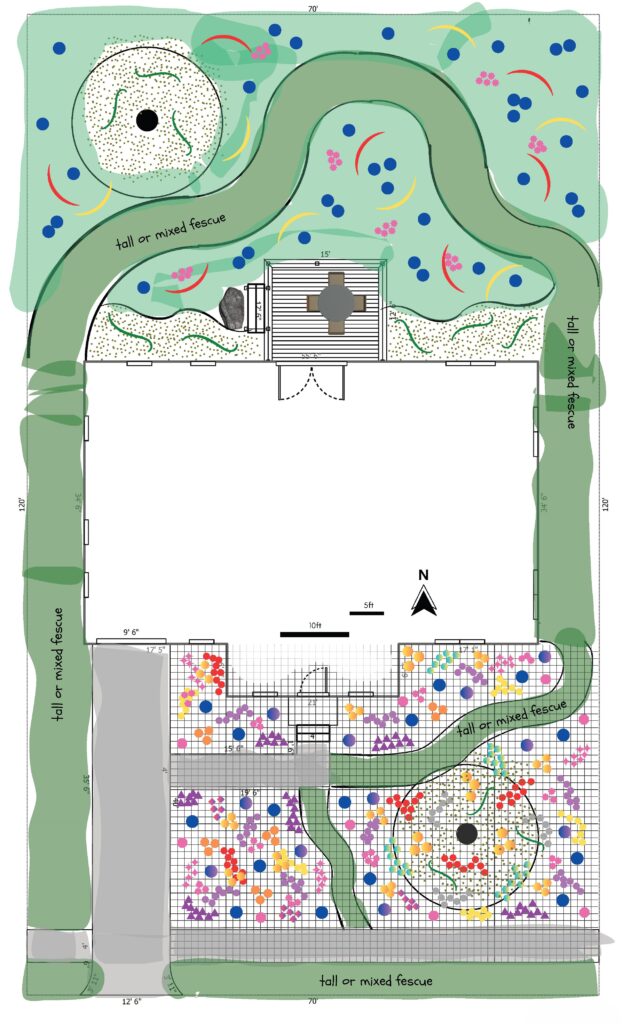
Printing note: This design was created to be 8.5″ x 14″ and the design pdf will print best on legal size paper.
Wild Ones Meet the Designer Webinar
Matrix Landscape Design with Benjamin Vogt

Designer Statement
My work focuses on the best way to translate natural plant community organization in the wild to an urban and suburban landscape where anyone can DIY a natural garden. Matrix design best approximates what we see in wild meadows and prairies where the matrix is composed of an interlocking baselayer of bunchgrasses and/or sedge species. From that living green mulch layer emerge masses and drifts of forbs/flowers that express themselves throughout the growing season — and even through winter. When we repeat those patterns of forbs in a landscape we also help the viewer’s eye flow across the space and read it, connecting the dots, and seeing purpose as well as connection to the wilder unlawned landscape. Selecting plants purposefully, based on bloom succession, shape, and color is the obvious way to start planning, but researching sociability is the most critical step, especially if we want to reduce management and frustration a few years post establishment. Each plant’s gregariousness is matched to the site, the niche in the landscape layer, and to one another to create a woven fabric of vegetation that heals the site, revives nature, and provides beauty for all species as the garden changes and evolves naturally over time. Gardening with nature is not only healthier but it’s smarter, even if it takes more up-front investment in learning about the plants. Ultimately, I try to let plants guide the management and design tweaking, letting them tell the story and show what needs to be done over time as we work together to support ecosystem function and wildlife.
Site Analysis
Doing a site analysis is critical to proper plant selection and helping reduce management over time by place plants correctly on the site and among one another. For this plan, we are assuming a rather level grade or slight slope away from the house, as well as a clay-loam soil that is moderately compacted. The front and back yards are in fairly pristine tall fescue lawn and our goal is to work with what we have to reduce expense and labor.
Preparation Method
There are many strategies to employ when converting a lawn to a designed meadow garden, and each have their pros and cons; choosing the one that syncs up best with your ability, pocketbook, and time frame is critical. For this site, we applied one treatment of glyphosate, broadcast 1.5” of shredded wood mulch (front), then planted directly into the ground. This method results in less site disturbance and fewer weeds while letting the dead lawn add organic matter as it breaks down. For the backyard, we scalped the lawn after spraying, raked it out, and then broadcast Bouteloua gracilis seed directly into the dead lawn.
Design Considerations and Features
This design uses a matrix planting strategy, a naturalistic approach that mimics the dense, layered plant communities found in prairies and meadows. A base layer of sedges and bunchgrasses stabilizes the soil, suppresses weeds, and provides structure for the entire landscape. Flowering perennials and forbs are woven through this matrix to add seasonal interest and color, supporting local biodiversity and helping the garden evolve dynamically throughout the year.
Trees Selection and Underplanting
The planting under the trees or within the dripline — as well as the north foundation bed — is composed of shade tolerant and woodland edge species using two sedges as the matrix/living green mulch/groundcover. It’s a good idea to try and blend the sun/shade matrix plants in the area around the tree’s drip line.
Suggesting a native tree is highly site specific and dependent on what the landowner wants. One great option is Ulmus americana ‘Princeton’ (American elm), which has a classic vase shape that allows plenty of sunlight to filter around its base. This helps support vibrant underplantings and maintains good visibility through and around the tree. For something smaller but just as impactful, consider Quercus prinoides (dwarf chinkapin oak) or Prunus virginiana (chokecherry). While these tend to grow as large shrubs, they can be pruned to be small trees.
Front Yard
The front yard is arranged in a structured, garden-like layout, with a focus on creating visual interest through tight spacing and plant groupings.
The matrix is established using Bouteloua gracilis (blue grama) as the base layer. To add more height and texture in sunnier areas, Bouteloua curtipendula (sideoats grama) is can be used to replace the shorter Bouteloua gracilis.
The integration of other species, such as Carex albicans (white-tinged sedge) and Carex sprengelii (Sprengel’s sedge), adds textural contrast and establishes a living green mulch around tree bases and along foundation beds. This matrix structure serves as a visual foundation for colorful drifts of forbs like Aquilegia canadensis (wild columbine), Rudbeckia hirta (black-eyed susan), and Symphyotrichum oblongifolium (aromatic aster), which provide seasonal interest and support for pollinators throughout the growing season.

Backyard
In contrast to the front, the backyard offers a mellow, clean, even modern and simple landscape using a blend of native prairie grasses and flowering perennials. The matrix layer is primarily established using Bouteloua gracilis (blue grama) planted directly into the dead, scalped lawn.
Forbs and flowering perennials are interspersed throughout the matrix. Drifts of ten Aquilegia canadensis (wild columbine) and Rudbeckia hirta (black-eyed susan) add early and summer season color, respectively. There are also individual, spaced-out specimen plantings (marked by blue dots) of Symphyotrichum oblongifolium (aromatic aster), which provide late-season nectar and vibrant fall color. Additionally, clumps of Liatris aspera (button blazingstar) punctuate the landscape, offering upright structure and rich purple hues that attract pollinators.

Backyard shade plantings feature Carex albicans (white-tinged sedge) with drifts of Carex sprengelii (Sprengel’s sedge) fading back into the sunnier matrix of Bouteloua gracilis (blue grama).

Paths
Paths are a key feature in any garden design, guiding movement and providing structure. In this design, you can keep the existing tall fescue (Schedonorus arundinaceus) lawn as a simple, green walkway by mowing it regularly. If you want a lower-maintenance option, consider swapping the grass for mulch or gravel. These materials create a more defined path and blend seamlessly into the natural aesthetic of the garden. While some might consider Bouteloua dactyloides (buffalo grass) as a replacement, it often requires as much upkeep as traditional fescue due to its sparse growth and vulnerability to weeds. Choose the path material that fits your needs and enhances your garden’s natural beauty.
Phasing
To help manage costs and labor, the project can be divided into phases, allowing for flexibility and adaptation as the garden is established. Phase 1 focuses on the front foundation bed, where starting with a smaller, more controlled area can help build experience and confidence with matrix planting techniques. Phase 2 expands to the front yard, providing a more significant visual impact and increasing habitat space for wildlife. Phase 3 moves to the backyard, offering opportunities to experiment with additional plant diversity and different design elements. Alternatively, you could switch Phases 2 and 3 depending on your priorities for visibility and accessibility.
You may find that the number of forb specimens are not enough and you’d like more, or that over time you’d like to increase the diversity and structure and bloom succession. There’s plenty of room to do that in the ground cover layer in both sun and shade areas.
Management
During the first year weed control is critical. We expect mostly annuals like foxtail and crabgrass, which can quickly outpace the native plant plugs and look gangly, so deadheading them is important for aesthetics; however, since these are annual species, there’s no need to pull, which disturbs the soil and brings up more weed seeds to germinate. Since we are planting so densely, on 6-12 inch centers or seeding, the garden will start to out-compete most weed species in years 2-3, and weed control will be much less of an issue. Each spring the landscape in the sunny areas should be mowed down to 6 inches around April 1, while the shade areas with sedge are left alone.
Watering schedules in clay loam in southeast Nebraska vary based on weather and planting time of year, but generally, a 60-90 minute aerial or overhead soaking (not drip hoses) right after planting, followed by a 45-minute watering 2-3 times per week for 2-3 weeks gets us off to a good start. If fall planted, watering after the initial period isn’t usually needed, but in spring we suggest a weekly watering of 60 minutes for a few more weeks as well as a few times during a prolonged drought of several weeks (which is common in July, August, or even September). Watering in year two is often not required. Sown areas will need consistent surface soil moisture for the first 3-5 weeks to germinate the Bouteloua seed.
Plant List

Alumroot(Heuchera richardsonii)
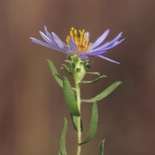
Aromatic Aster(Symphyotrichum oblongifolium)
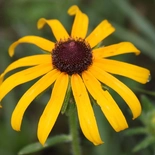
Black Eyed Susan(Rudbeckia hirta)

Blue Grama(Bouteloua gracilis)
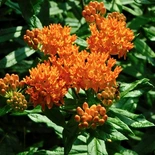
Butterfly Weed(Asclepias tuberosa)
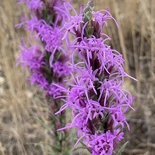
Dotted Blazing Star(Liatris punctata)
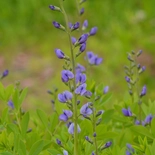
False Indigo(Baptisia australis)
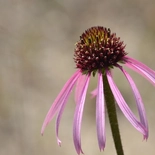
Pale Purple Coneflower(Echinacea pallida)

Prairie Penstemon(Penstemon cobaea)
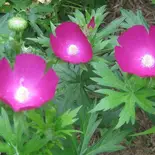
Purple Poppy Mallow(Callirhoe involucrata)

Purple Prairie Clover(Dalea purpurea)

Rough Blazing Star(Liatris aspera)

Showy Goldenrod(Solidago speciosa)
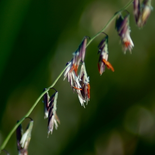
Sideoats Grama(Bouteloua curtipendula)
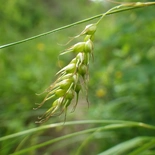
Sprengel's Sedge(Carex sprengelii)
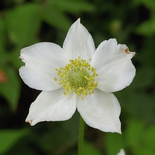
Tall Thimbleweed(Anemone virginiana)
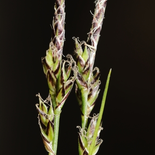
White Tinge Sedge(Carex albicans)
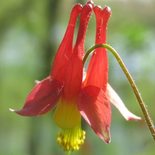
Wild Columbine(Aquilegia canadensis)

Zigzag Goldenrod(Solidago flexicaulis)
About the Designer

Benjamin Vogt’s design work has been featured in The American Gardener, Better Homes and Gardens, Dwell, Fine Gardening, Gardenista, Garden Design, Horticulture, Midwest Living, The New York Times, and The Wall Street Journal. For five years Benjamin wrote an award-winning garden column for Houzz which garnered over 3 million reads with 200 articles.
His home landscape is profiled in the book American Roots (Timber Press). He is frequently interviewed in print and podcasts while speaking nationally on environmental activism and sustainable urban design for wildlife.
Benjamin is author of several books, including the disruptive, call to action A New Garden Ethic: Cultivating Defiant Compassion for an Uncertain Future (watch the presentation based on the book) as well as Prairie Up: An Introduction to Natural Garden Design. The former is in its 4th printing, and the latter in its 6th printing having sold 11,500 copies in its first year.
He operates Prairie Up, a firm dedicated to offering garden design, online classes, workshops, webinars, and guidebooks.Active on social media with over 80,000 followers, he runs the Facebook page Milk the Weed.
Benjamin has an M.F.A. (The Ohio State University) and Ph.D. (University of Nebraska-Lincoln) in English and has taught over fifty college classes for which he’s received multiple awards. That’s right, Benjamin went to school to study writing poetry, memoir, and environmental literature.
He lives in Lincoln, Nebraska with his wife, son, and two rescue cats.
Free National Webinar- January 2026
January 21st at 6:00 PM (CT)
Details coming soon!
About Wild Ones
Wild Ones (a 501(c)(3) nonprofit organization) is a knowledgeable, hands-on, and supportive community focused on native plants and the ecosystem that depends on them. We provide resources and online learning opportunities with respected experts like Wild Ones Honorary Directors Doug Tallamy, Neil Diboll, and Larry Weaner, publishing an award-winning journal, and awarding Lorrie Otto Seeds for Education Program grants to engage youth in caring for native gardens.
Wild Ones depends on membership dues, donations and gifts from individuals like you to carry out our mission of connecting people and native plants for a healthy planet.
Looking for more native gardening inspiration? Take a peek at what our members are growing!

